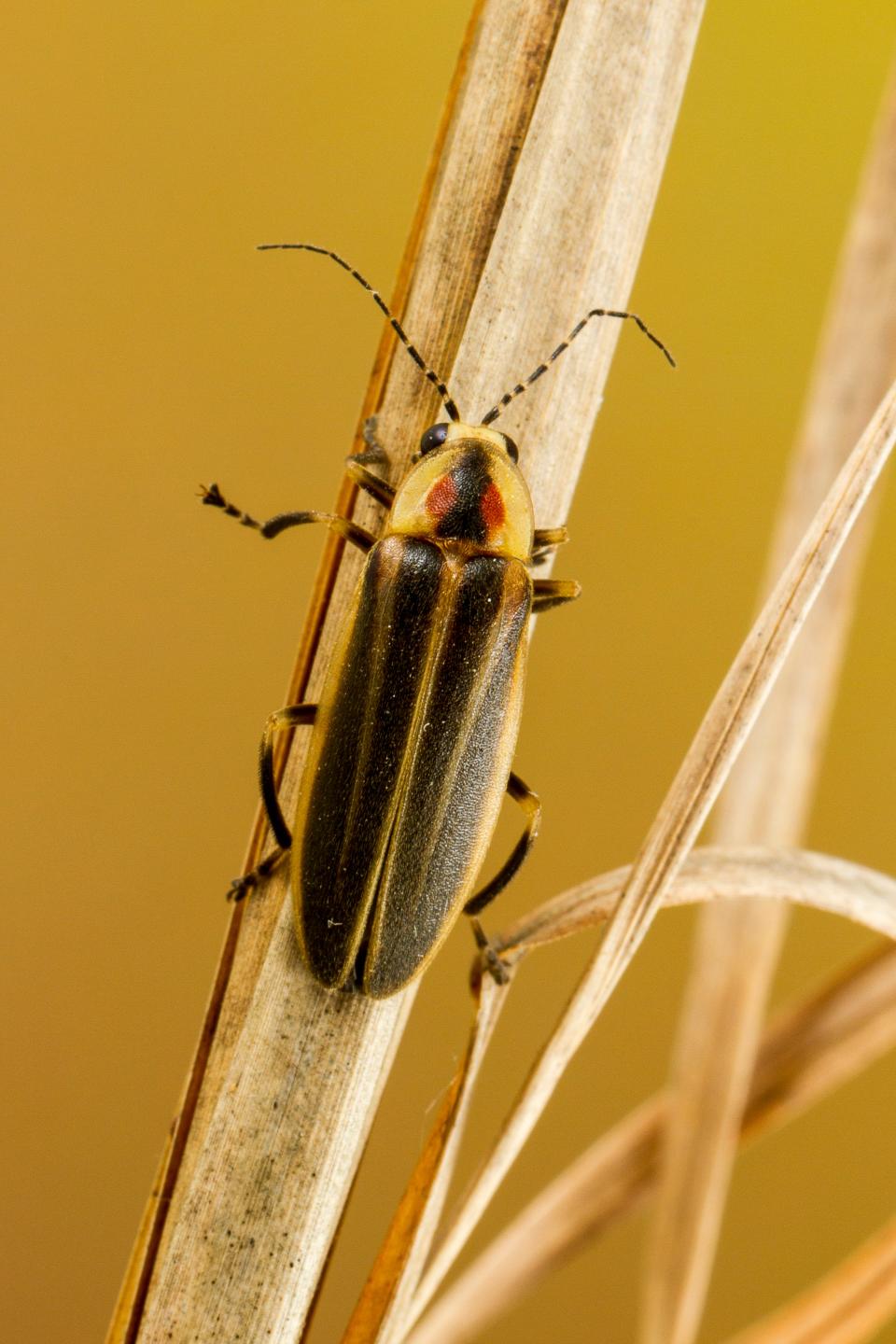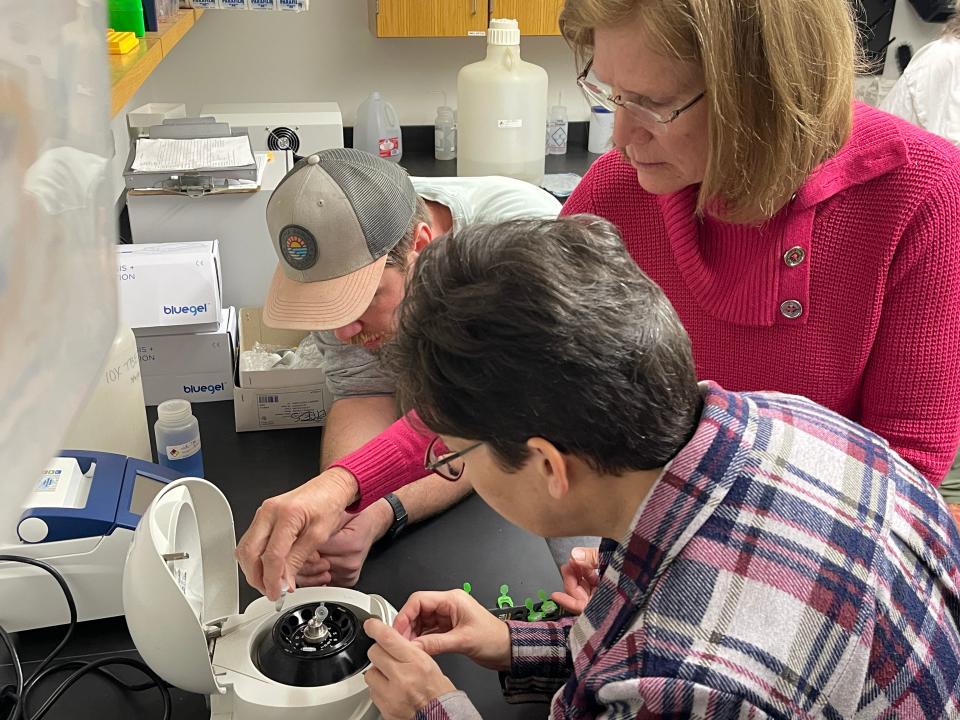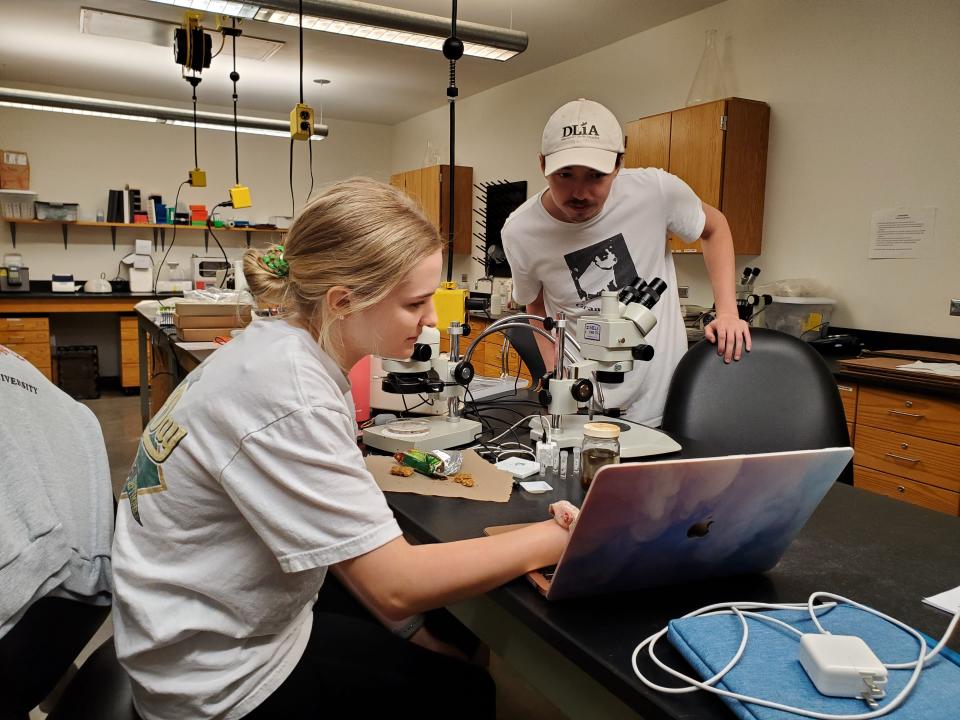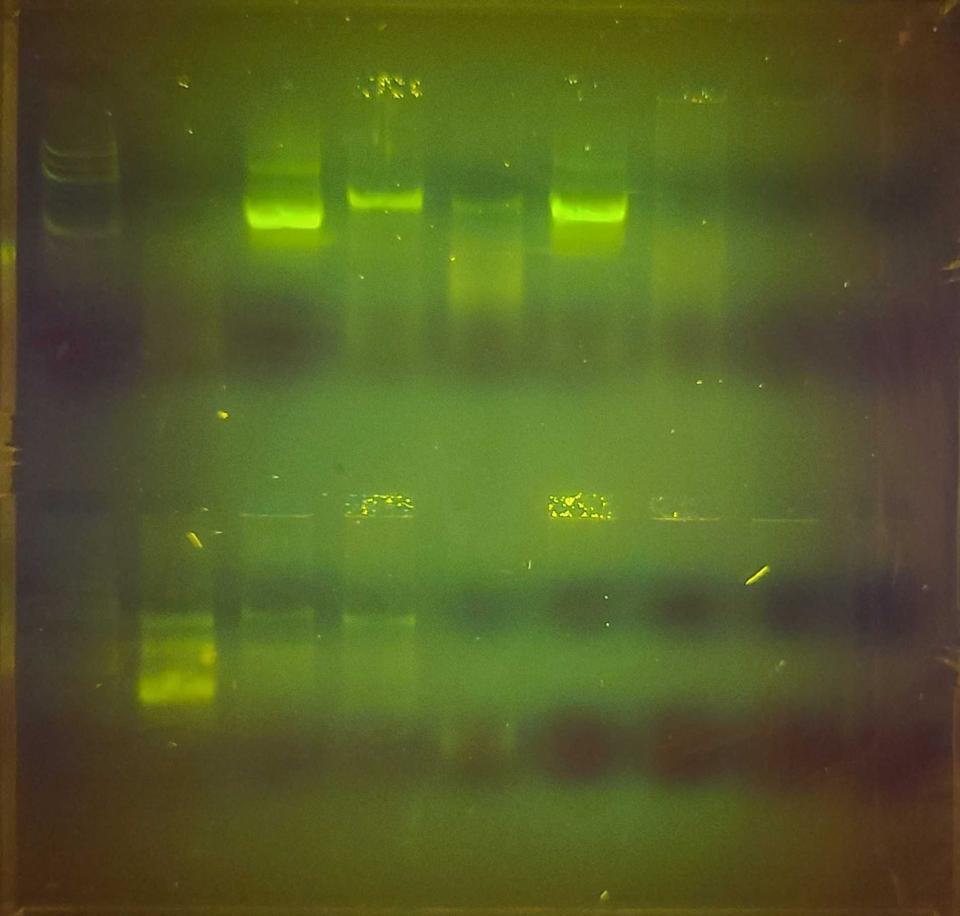Word from the Smokies: DNA barcoding confirms firefly species in the park
- Oops!Something went wrong.Please try again later.
Anyone who watches murder mystery TV shows or listens to true-crime podcasts has probably heard of the use of DNA analysis in forensic science to exonerate or implicate a suspect. But what if DNA analysis could also be used to solve the mystery of who lives in Great Smoky Mountains National Park?
Some scientists working on species discovery in the Smokies had that exact same question and recently began to use DNA (deoxyribonucleic acid) barcoding technology to better identify some of the small charismatic species that call the park home. Already one firefly species “mystery” has been solved, and the case is closed.

“We can now officially say that the spring four-flasher, Photuris quadrifulgens, is here in the Smokies — one of the 19 firefly species documented so far,” said Will Kuhn, director of science and research for Discover Life in America.
Great Smoky Mountains National Park is renowned for its biodiversity and is home to many species that are still undocumented and, in fact, new to science. Since 1998, scientists working in the Smokies as part of the All Taxa Biodiversity Inventory have documented 1,079 new-to-science species. Discover Life in America conducts this type of research as part of managing the ATBI, which is an effort to catalog and understand every single species living in the park.

“The spring four-flasher has long been presumed to be in the Smokies — enough that the ATBI has been counting it as ‘present’ based on museum specimens highly resembling the species,” Kuhn said.
The problem was that Photuris quadrifulgens is nearly impossible to identify by appearance alone. The species was confirmed when Kuhn and DLiA interns Emerie Landers, Laura Dixson and RJ Smith used DNA to identify a sample Kuhn had collected near the Abrams Creek Ranger Station in May of 2023.
The spring four-flasher is a widespread species of firefly found in various grassy habitats, including hay fields and meadows, across the eastern United States. The most common flash pattern for this species is a string of three or four pulses of greenish-yellow light about a half second apart followed by four seconds of darkness. Males will begin to display in May and June and can be seen just above the vegetation in open areas and among the trees adjacent to these areas.
More: Word from the Smokies: Scientists discover new salamander species hiding in plain sight
More: Word from the Smokies: Dykeman namesake among 3 new Smokies spiders

Kuhn used equipment and supplies provided to DLiA by the DNA Learning Center at Cold Spring Harbor Laboratory in New York to sequence the “barcode gene” of this specimen’s DNA. He then compared it to an international database of sequences from known species. The specimen matched several sequences in the database, including one from a spring four-flasher that was identified by firefly expert James Lloyd as part of a 2007 study of the evolutionary relationships among North American fireflies. Through this match, the scientists were able to confirm that the spring four-flasher was indeed found in Great Smoky Mountains National Park.
“All animals, including humans, carry a particular piece of DNA, the CO1 gene, that’s pretty much unique for every species, like the barcode on an item in the grocery store,” Kuhn explains. “The process of DNA barcoding is to first determine the unique sequence of the four nitrogen bases in the DNA molecule, which are cytosine, guanine, thymine, and adenine. This sequence makes up an individual’s barcode that can then be compared to those from known species to find a match.”

More: Word from the Smokies: Community scientists discover 70-plus new Smokies species
More: Word from the Smokies: 4 new snakes discovered by UNCA prof, Smokies researcher in 6 years
Although many species found in the Smokies are already represented in global DNA databases, scientists believe there are still quite a few park species that have yet to be analyzed and barcoded. This provides meaningful opportunities for discoveries in the Smokies to contribute to the greater body of genetic knowledge and benefit researchers around the world.
“We at Discover Life in America are excited to add DNA barcoding to our toolbelt,” said Kuhn. “We aim to publish new barcodes for Smokies species and to use this technology to help us find potential new species to science in the park.”
Discover Life in America will be hosting its annual fundraising event, Fireflies at Norton Creek, June 6-9. Tickets are now available online at dlia.org/events/fireflies-2024.

Jaimie Matzko is the biodiversity program specialist for Discover Life in America, coordinating events, communications, and educational programming. Reach her at jaimie@dlia.org.
This article originally appeared on Asheville Citizen Times: Word from Smokies: DNA barcoding confirms firefly species in the park

